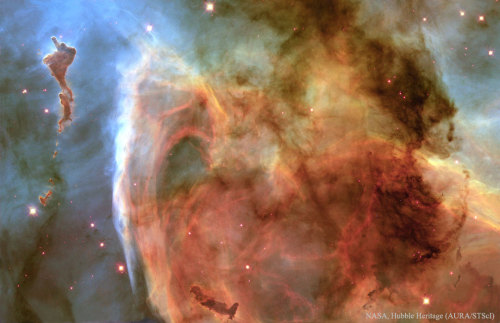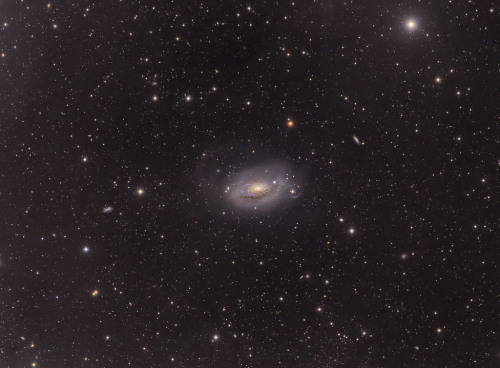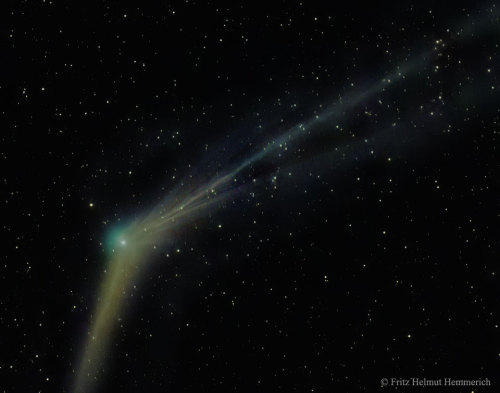Keyhole Nebula, Inside The Larger Carina Nebula

Keyhole Nebula, inside the larger Carina Nebula
More Posts from Littlecadet-biguniverse and Others

M63 // Sunflower Galaxy

NGC 1275 Multi-Wavelength


ESO 378-1

The Running Chicken Nebula.
Image Credit & Copyright: Andrew Campbell


Mercury is passing directly across the sun for the first time in nearly a decade.
The innermost planet of our solar system will look like a small, dark circle cutting across the sun’s disc. In the U.S., the transit began shortly after 7 a.m. ET on Monday and will continue for more than seven hours.
At least part of the transit, which only happens about 13 times every century, will be visible across the Americas, Europe, Africa and large portions of Asia.
If you’re hoping to watch it, eye protection is key. NASA stresses that “viewing this event safely requires a telescope or high-powered binoculars fitted with solar filters made of specially-coated glass or Mylar.”
You won’t be able to see the tiny dot of Mercury on its celestial crawl without magnification, NASA says.
Another option: Check out one of the multiple live-streaming events going on Monday. NASA says it will stream the transit here, here and here.
It’s not all about the show — transits like this one have historically been, and continue to be, important research opportunities for scientists. First observed in 1631, the transits were later used to “measure the distance between the Earth and the Sun,”NASA said.
Now, they provide scientists an opportunity to study the planets’ exospheres — the thin layer of gases that make up their atmosphere.
“When Mercury is in front of the sun, we can study the exosphere close to the planet,” NASA scientist Rosemary Killen said in a release from the Jet Propulsion Laboratory. “Sodium in the exosphere absorbs and re-emits a yellow-orange color from sunlight, and by measuring that absorption, we can learn about the density of gas there.”
Additionally, scientists have found that a transiting planet causes a drop in the sun’s brightness.
This phenomenon is “the main way we find planets outside the solar system,” NASA says.
The Kepler mission, which is searching for habitable planets, has found 1,041 planets to date using the transit method. The mission says it is able to determine the size of a planet by observing its transit.
Image Credit: NASA

TODAY IN HISTORY: The spectacular rings of Saturn, August 23, 1981, observed by the Voyager 2 space probe.

Comet Catalina Emerges : Comet Catalina is ready for its close-up. The giant snowball from the outer Solar System, known formally as C/2013 US10 tails, making it an impressive object for binoculars and long-exposure cameras. The featured image was taken last week from the Canary Islands, off the northwest coast of Africa. Sky enthusiasts around the world will surely be tracking the comet over the next few months to see how it evolves. via NASA
js

Galaxy Ngc474

Just Another Milky Way Shot Taken From Death Valley, CA
js
-
 waiting-for-youuu reblogged this · 1 year ago
waiting-for-youuu reblogged this · 1 year ago -
 laviejasapa liked this · 2 years ago
laviejasapa liked this · 2 years ago -
 acept-arte liked this · 3 years ago
acept-arte liked this · 3 years ago -
 byrafayozef liked this · 3 years ago
byrafayozef liked this · 3 years ago -
 noonehereanymoresblog liked this · 3 years ago
noonehereanymoresblog liked this · 3 years ago -
 lampycancy liked this · 4 years ago
lampycancy liked this · 4 years ago -
 dailypicsoftheuniverse liked this · 4 years ago
dailypicsoftheuniverse liked this · 4 years ago -
 automaticdestinytrash reblogged this · 5 years ago
automaticdestinytrash reblogged this · 5 years ago -
 automaticdestinytrash reblogged this · 5 years ago
automaticdestinytrash reblogged this · 5 years ago -
 mellowunknowninternet liked this · 5 years ago
mellowunknowninternet liked this · 5 years ago -
 wassimshit liked this · 5 years ago
wassimshit liked this · 5 years ago -
 ericrwojo813 liked this · 5 years ago
ericrwojo813 liked this · 5 years ago -
 templs-blog liked this · 5 years ago
templs-blog liked this · 5 years ago -
 automaticdestinytrash reblogged this · 5 years ago
automaticdestinytrash reblogged this · 5 years ago -
 automaticdestinytrash reblogged this · 5 years ago
automaticdestinytrash reblogged this · 5 years ago -
 automaticdestinytrash reblogged this · 5 years ago
automaticdestinytrash reblogged this · 5 years ago -
 aurora1609 reblogged this · 5 years ago
aurora1609 reblogged this · 5 years ago -
 yesiamlogophile liked this · 5 years ago
yesiamlogophile liked this · 5 years ago -
 xinfierno liked this · 5 years ago
xinfierno liked this · 5 years ago -
 gordon012 liked this · 5 years ago
gordon012 liked this · 5 years ago -
 scopofilicbop reblogged this · 5 years ago
scopofilicbop reblogged this · 5 years ago -
 scopofilicbop liked this · 5 years ago
scopofilicbop liked this · 5 years ago -
 meggriffinislost reblogged this · 5 years ago
meggriffinislost reblogged this · 5 years ago -
 lllunitaaa reblogged this · 6 years ago
lllunitaaa reblogged this · 6 years ago -
 macgyver42 liked this · 6 years ago
macgyver42 liked this · 6 years ago -
 badbro51-blog liked this · 6 years ago
badbro51-blog liked this · 6 years ago -
 edmisbestmusic liked this · 6 years ago
edmisbestmusic liked this · 6 years ago -
 oskarply1-blog liked this · 6 years ago
oskarply1-blog liked this · 6 years ago -
 imartistry21 liked this · 6 years ago
imartistry21 liked this · 6 years ago -
 looking-for-the-great-unknown liked this · 6 years ago
looking-for-the-great-unknown liked this · 6 years ago -
 hvlre-blog liked this · 6 years ago
hvlre-blog liked this · 6 years ago -
 hotgraba liked this · 6 years ago
hotgraba liked this · 6 years ago -
 heavymetalpimp liked this · 6 years ago
heavymetalpimp liked this · 6 years ago -
 anxiety-prone-human liked this · 6 years ago
anxiety-prone-human liked this · 6 years ago -
 innerfestivalcollectorblr-blog liked this · 6 years ago
innerfestivalcollectorblr-blog liked this · 6 years ago -
 saucyy-a liked this · 7 years ago
saucyy-a liked this · 7 years ago -
 calantthe-blog reblogged this · 7 years ago
calantthe-blog reblogged this · 7 years ago -
 ask-shiny-rufflet liked this · 7 years ago
ask-shiny-rufflet liked this · 7 years ago -
 imirrornoir-blog liked this · 7 years ago
imirrornoir-blog liked this · 7 years ago -
 blurrymango reblogged this · 7 years ago
blurrymango reblogged this · 7 years ago -
 blurrymango liked this · 7 years ago
blurrymango liked this · 7 years ago -
 carnage53 liked this · 7 years ago
carnage53 liked this · 7 years ago
GREETINGS FROM EARTH! Welcome to my space blog! Let's explore the stars together!!!
144 posts